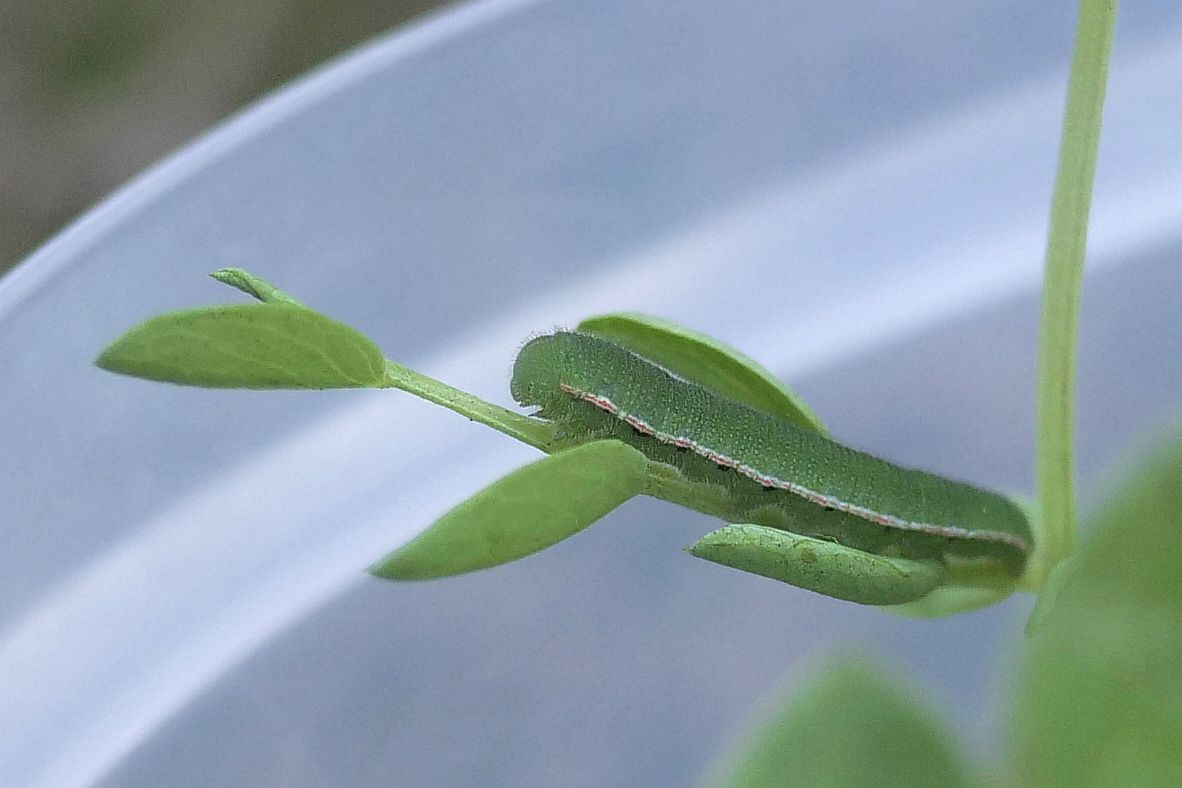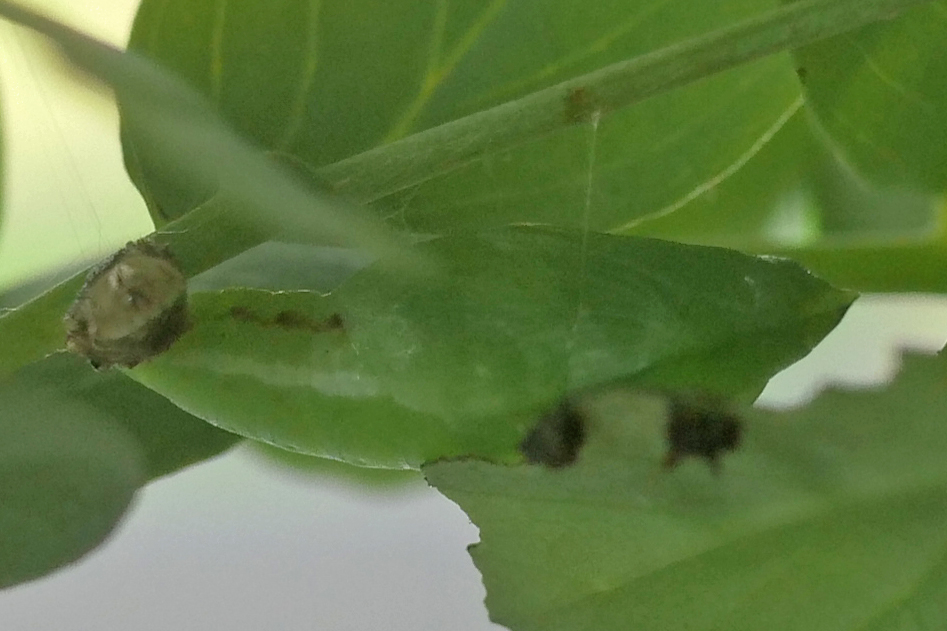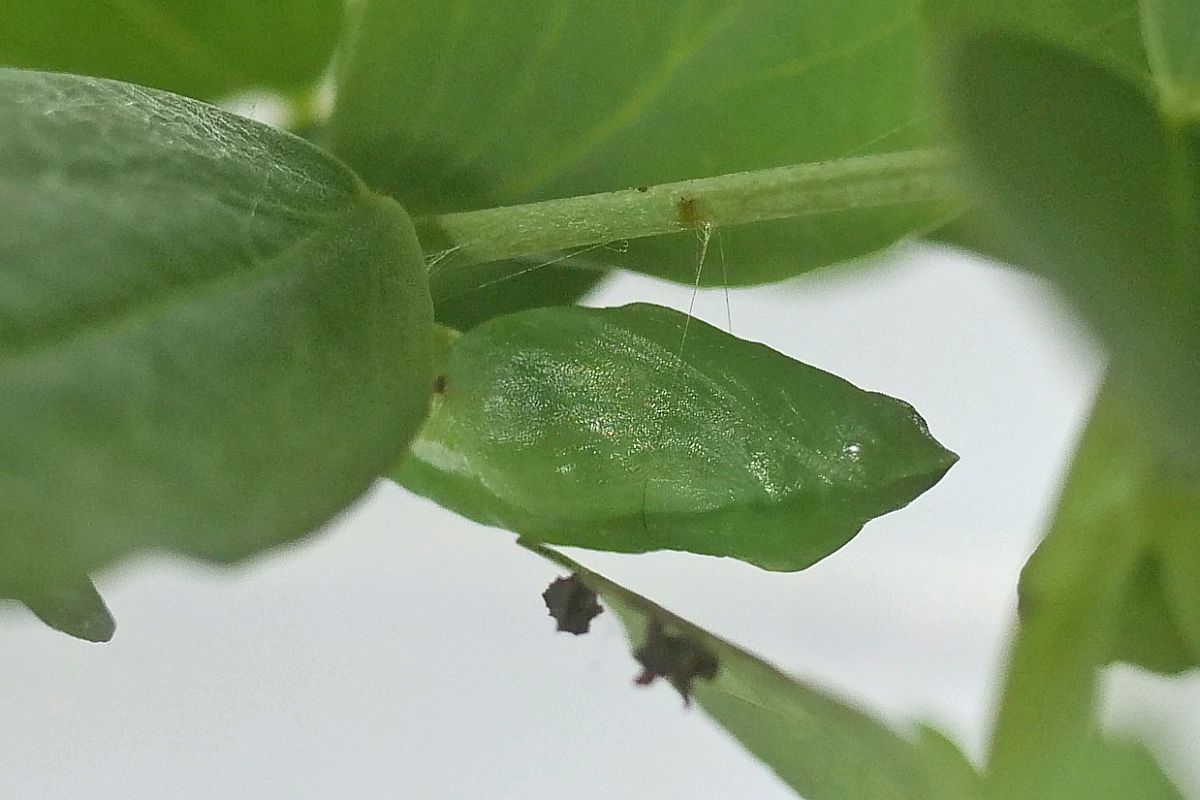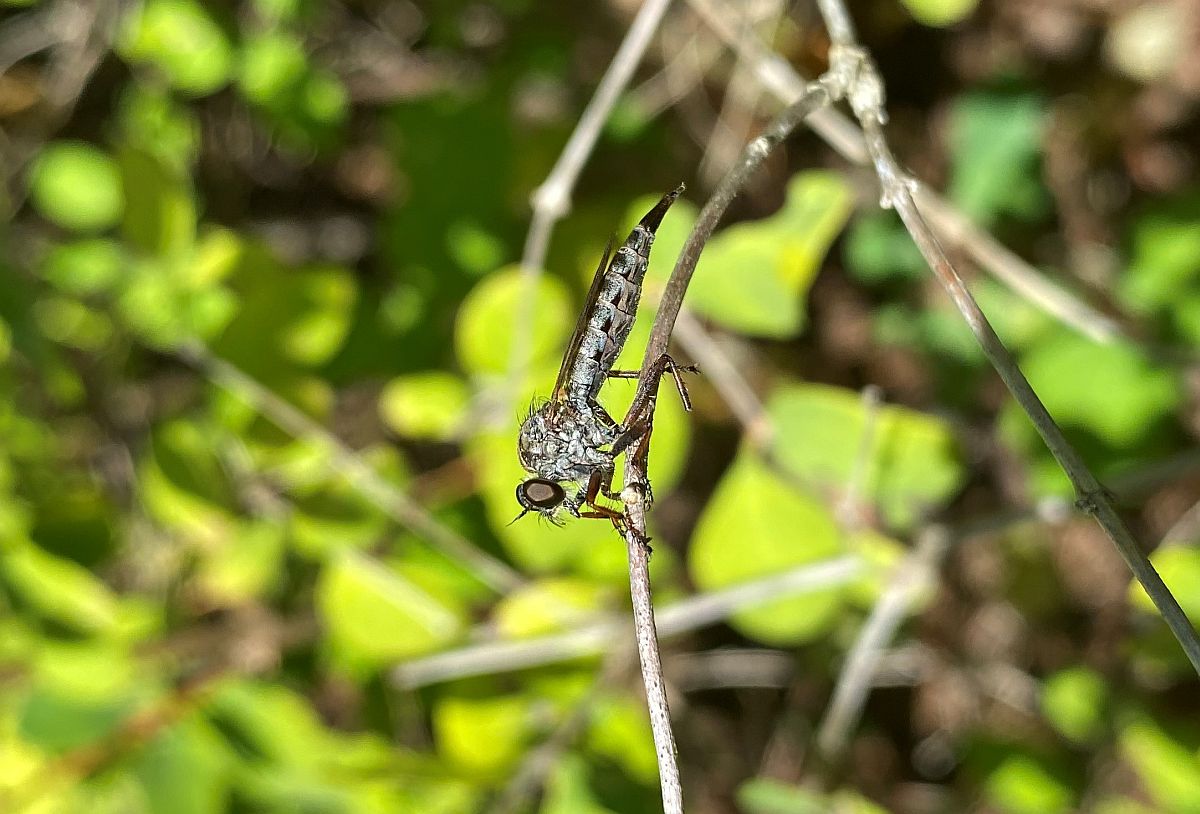2021 October 7
2021 October 7
(No October 6 posting, in case you were looking.)
On August 22 we posted a photograph from Mark Wynja in Bowser of a Clouded Sulphur Colias philodice with an egg beneath it on a leaf of Beach Pea Lathyrus japonicus. Mark found four eggs, and he has now succeeded in the tricky task rearing them to chrysalides. Mark writes:
Aug 20, 2021 – female Clouded Sulphur photographed (egg spotted on leaf below her)
Aug 23, 2021 – collected eggs and parts of host beach pea
Aug 24/25, 2021 – four caterpillars emerged
Oct 3/4, 2021 – first caterpillar has entered the pupal stage
Oct 6, 2021 – two more Clouded Sulphur caterpillars have entered the pupal stage. One pupa has fallen from where it attached itself. The largest of the caterpillars has stopped moving and eating; it will likely pupate soon.
This whole process has taken 40 or more days from the caterpillars emerging to entering the pupal stage. They have spent their time in the rearing container with a regular fresh supply of beach pea.They are in our sunroom, out of direct sunlight, where it is only marginally warmer than the outside temperature.

Clouded Sulphur Colias philodice (Lep.: Pieridae) Mark Wynja

Clouded Sulphur Colias philodice (Lep.: Pieridae) Mark Wynja

Clouded Sulphur Colias philodice (Lep.: Pieridae) Mark Wynja
Kalene Lillico, Program Naturalist at Swan Lake, sent a photograph of what she described as a sweet little robber fly. She also suggested a more prosaic name, Neomochtherus willistoni , and Dr Rob Cannings confirms that she was spot on – which is what you’d expect of a Swan Lake Program Naturalist.

Female robber fly Neomochtherus willistoni (Dip.: Asilidae) Kalene Lillico
